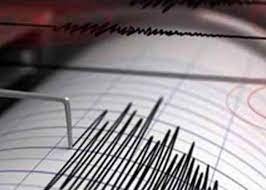
An earthquake measuring 4.2 on the Richter Scale struck Pakistan’s Faisalabad division on Tuesday evening, the National Centre of Seismology (NCS) reported.
The tremor, recorded at around 7:30 PM local time, originated at a depth of 111 kilometers. Its epicenter was pinpointed near Jhang Tehsil in Punjab, at coordinates 31.31°N and 72.52°E. No injuries or damage to infrastructure have been reported so far.
This marks the third earthquake to hit Pakistan during the month of May, highlighting the region’s ongoing seismic activity. Earlier, on May 12, a magnitude 4.9 earthquake rattled Quetta, the capital of Balochistan province, and nearby areas. Fortunately, that event also passed without any casualties.
Rising Seismic Activity
Pakistan lies in one of the most earthquake-prone regions in the world, as it straddles the boundary between the Indian and Eurasian tectonic plates. The provinces of Balochistan, Khyber Pakhtunkhwa, Gilgit-Baltistan, and the Federally Administered Tribal Areas are situated on the southern edge of the Eurasian plate, while Punjab, Sindh, and Pakistan-occupied Jammu and Kashmir rest on the northwestern fringe of the Indian plate.
The director of the National Centre for Seismology, O P Mishra, stated that the earthquake’s epicenter was associated with the Main Central Thrust — a known seismic fault line prone to regular tremors in the region.
This recent activity underscores the persistent risk of earthquakes in the region, urging authorities and residents to remain vigilant. Although Tuesday’s earthquake caused no immediate harm, experts emphasize the importance of preparedness in the face of Pakistan’s volatile seismic geography.
Sources By Agencies

